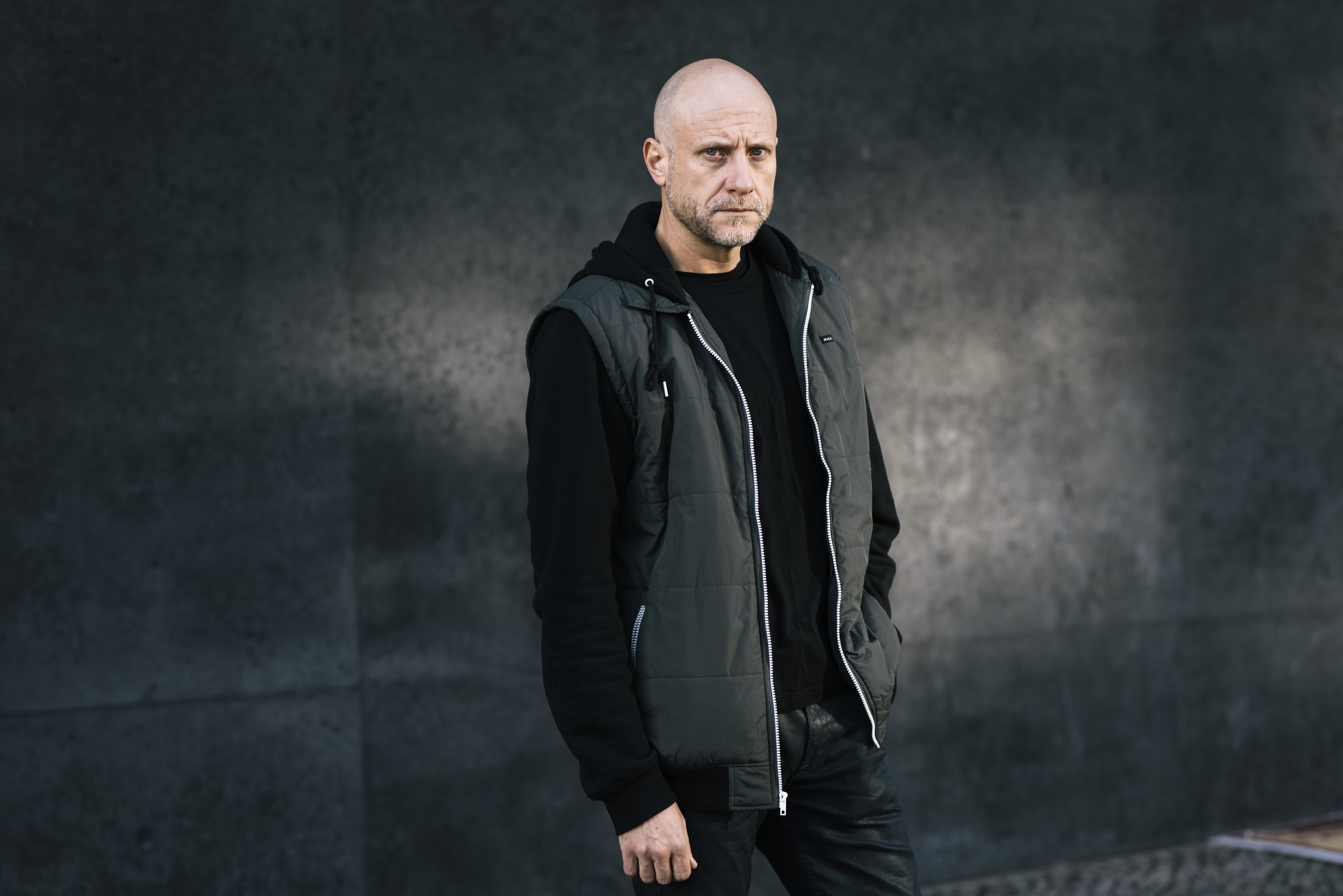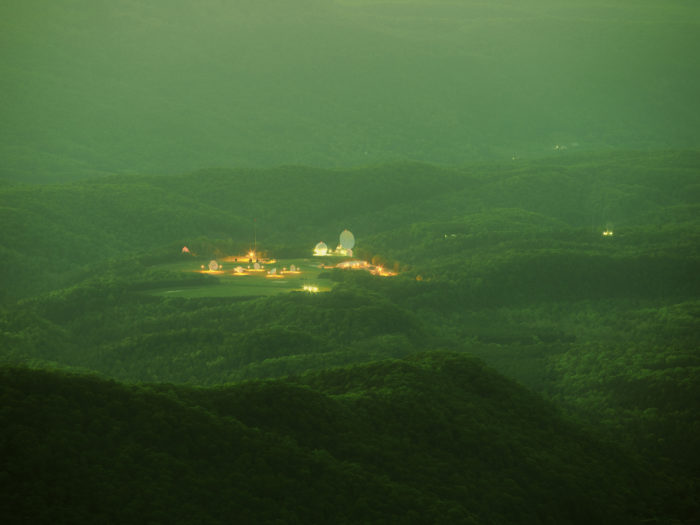
The artist Trevor Paglen has taken up surveillance as one of his great subjects, but he doesn’t seem too concerned when I turn on my iPhone’s voice recorder during our interview at Metro Pictures, his New York gallery, in Chelsea. After all, he has bigger things to worry about: This month, he’s launching his own satellite into space—not something you hear every day— as part of his deep exploration of how technology and science are influencing life as we know it.
You could say he’s not overly insecure about being un-secure. Even though, yes, he’s one of those people who has the camera on his laptop covered up. “One of the guys that I work with in the studio is really much more secure than I am, which means he doesn’t have a cell phone, doesn’t have an email address,” says Paglen, smiling. “Basically, he can never communicate.”
As an artist, Paglen must communicate, and these days, he is doing extraordinarily well at that. A couple of weeks after our chat, he’s awarded a MacArthur Fellowship, a.k.a. a “genius grant.” In other words: Paglen has struck a nerve, and his approaches and ideas are being recognized.
At 43, with a bushy beard and a bald pate, the confident and thoughtful Paglen could be any successful creative dude in Brooklyn—a furniture maker or marketing executive. Instead he is a lauded thought leader operating between Berlin, New York and San Francisco. The largest exhibition of his work to date, “Trevor Paglen: Sites Unseen,” will be on view at the Smithsonian American Art Museum in Washington, D.C. from June 21 through January 6, presenting the last decade or so of his practice. He also has a show at Altman Siegel Gallery in San Francisco on view through May 5.

There is perhaps some irony in a Smithsonian show, given that it’s a government museum and much of what Paglen tackles in his work is the overreach of the state into our lives. “Exactly,” he says when I bring this up. “The Smithsonian museums are free, open to the public. They are among the most visited museums in the world. So it’s great to be able to have that kind of platform.” Although sincere, Paglen doesn’t come across as too eager to please, either. His ideas are his ideas, take them or leave them.
Certainly his satellite, Orbital Reflector, is his highest-profile piece—in all senses of the word: It will circle in low Earth orbit at a distance of some 350 miles up. “It’s a kind of giant diamond structure that’s 100 feet long and 6 feet high,” Paglen explains, “and it is just designed to reflect sunlight down to Earth. It will be up there for about two months.” The launch, from California’s Vandenberg Air Force Base, will be on one of Elon Musk’s SpaceX rockets, and the project is funded by the Nevada Museum of Art, a sponsor of important earthworks in the past. “Hopefully it’ll work,” Paglen says, laughing.
For the artist, what Orbital Reflector doesn’t do is the key. “The idea behind it is, ‘Can you build a satellite that has no military, commercial or scientific purpose?’” he says. “In other words, can you build a satellite that’s the exact opposite of every other satellite that has ever been made, one that is as close to a purely aesthetic gesture as possible?”
Orbital Reflector will be visible as a light in the night sky from time to time, and there will be “star parties” at museums for group viewing. Paglen will also document the project in a film.
Such work requires talents more akin to a project manager or foreman rather than the conventional artist skill set. Just the permissions involved in launching something into space were daunting, and there was the issue of insurance—turns out Prudential doesn’t have a standard policy for purely aesthetic satellites.

“The launch will be insured, so if the rocket blows up we’re good,” says Paglen. But insuring for a satellite that gets deployed but then doesn’t work? The cost of that was prohibitive. So he and his team got creative. “We figured out it’s cheaper to build two satellites and have one as a back-up than it would be to build one and then insure it.”
Born in Maryland, Paglen went to the University of California at Berkeley, returning there later for a PhD in geography; in between those stints, he got an MFA at the School of the Art Institute of Chicago. He had his first New York show, at a now-defunct gallery, only in 2006—in other words, he has come to prominence pretty fast.
At his Metro Pictures show last fall, he showed the impressive array of technology he deploys. He has had to harness it to warn us about the dangers of tech itself. There’s a temptation to imagine Paglen making these pieces in an underground lair surrounded by walls of rare equipment, but he sets me straight. Although it takes multiple machines and lots of hardware, he notes that “you can do it on your home computer.” He also acknowledges that “it’s expensive in terms of doing the research and development, and my power bill has tripled.”
Paglen is worried about what happens when humans are taken out of the decision-making process, particularly in matters related to artificial intelligence and mass surveillance. He’s one of a group of artists critically mining the same territory, including his friend and collaborator Laura Poitras, in whose former Berlin studio he now works.

But Paglen employs a wicked sense of humor in his take on the subject, as when he trained two different algorithms to debate what he calls “monsters of capitalism.” One program, the “generator,” draws zombies, vampires and other subjects and the other, known as a “discriminator,” tries to read them. “So they go back and forth to the point where the generator makes an image and the discriminator says ‘Yes, I believe you, that’s what you say it is.’” The artworks that result from this include Vampire (Corpus: Monsters of Capitalism), 2017, a print hung on the wall that Paglen terms an “adversarially evolved hallucination”—and it is spooky indeed, with a horror-movie face and an even scarier back story.
A more straightforward-looking work in that show, It Began as a Military Experiment, also from 2017, is a grid of 10 photographic portraits, but when you the know the piece’s genesis, it takes on a different cast: The images are of some people whose features are the basis for facial recognition software as developed by the Defense Advanced Research Project Agency. “They are like the Adams and Eves of facial recognition,” says Paglen.
They are wholly average looking, and these placid faces are the ones who help computers to talk to each other. “You don’t need the human seer anymore,” says Paglen. “Most of the images made in the world are made by computers for other computers.”
Paglen raises so many questions with each work that it can be dizzying at times; you’re going to need wall texts, catalog essays and more to sift through and comprehend it all. But he can sum up his overall project pretty succinctly, too. “What forms of power do these systems amplify, and at whose expense?” he asks. “For me, that’s the larger thing I’m trying to get at.”




